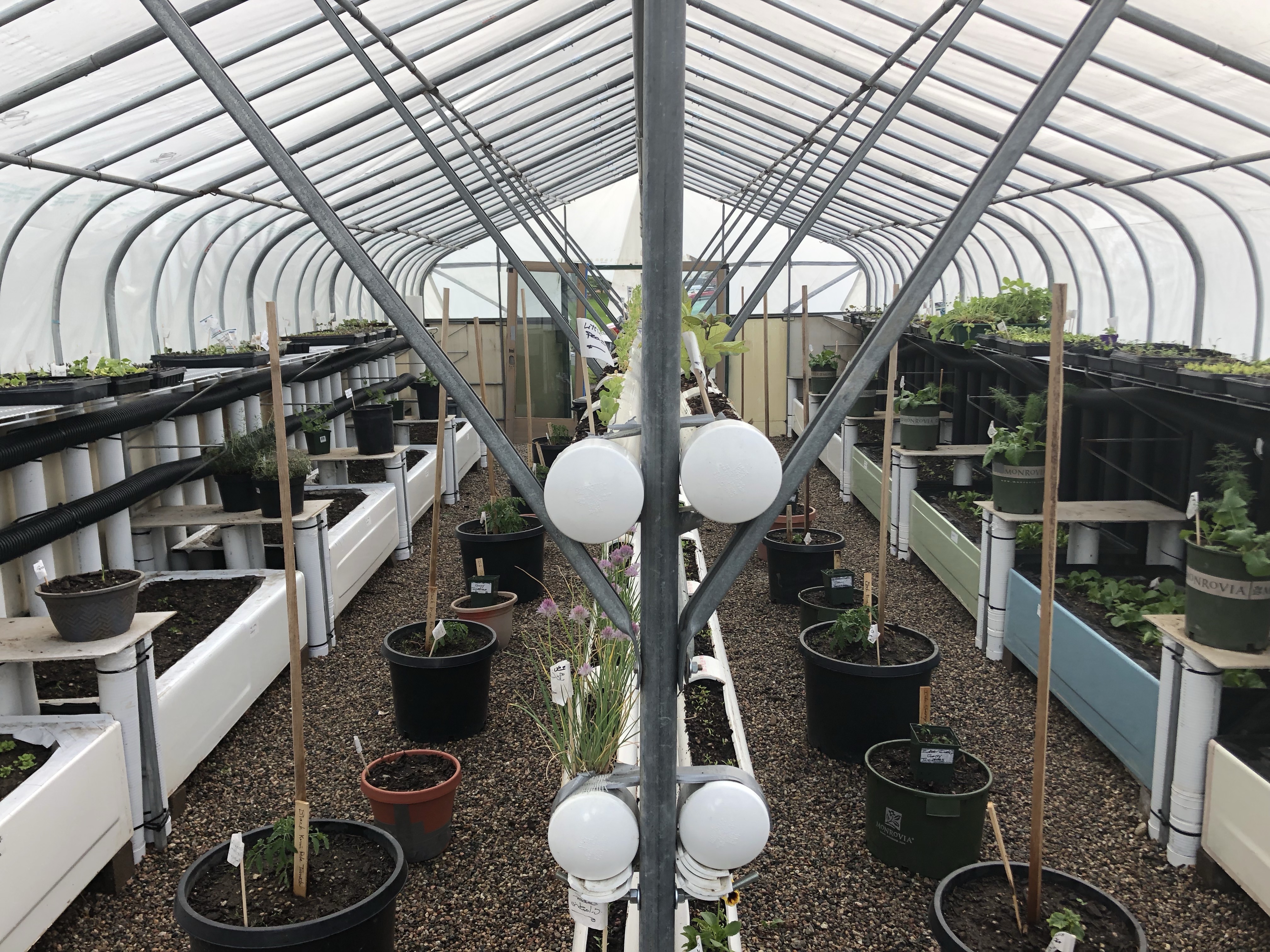
Lift Up, a thrift shop located in Steamboat Springs, Colorado, was started in 1996 by a group of churches who were asked for assistance by those who could not afford to buy food for themselves and their families. The foodbank grew and today is a thrift shop which has expanded to sell donated clothes, household goods, furniture, toys, baby carriages and other equipment.
What is unique about this complex is that its foodbank has started to grow its own food. This undertaking is unusually interesting because Steamboat Springs, located in the heart of the Rocky Mountains, has only about 60 food growingdays. Russell Goodman, Lift Up’s food manager, sees this as no problem and proudly points to their innovative hoop house.
 The difference between a hoop house and a greenhouse is that the hoop house does not have the expensive heating and cooling system of a greenhouse. The hoop is a high tunnel with steel pipe frames set in the ground to support the structure and covered with special plastic sheets. Russell explained that heating with a climate battery reduces cost and a series of old bath tubs lined with garden cloth accommodates the soil and seeds. The bath tubs drains connect to the water reservoir capillaries in the soil.
The difference between a hoop house and a greenhouse is that the hoop house does not have the expensive heating and cooling system of a greenhouse. The hoop is a high tunnel with steel pipe frames set in the ground to support the structure and covered with special plastic sheets. Russell explained that heating with a climate battery reduces cost and a series of old bath tubs lined with garden cloth accommodates the soil and seeds. The bath tubs drains connect to the water reservoir capillaries in the soil.
Lift Up is taking full advantage of the 60 outdoor food growingdays. Moniker Foundation which in part defines itself as “[providing] the proper blend of support and learning experiences to create lasting impacts for their clients,” has provided Lift Up’s foodbank with eighteen 9 cubic foot totes of extremely high quality organic soil which function as raised beds. These heavy tote bags of soil are placed in the proper place with a fork lift.
Russell, who has a degree in bioinformatics, is not daunted by all the tillage involved to make food grow. He says, “I oversee all the work in my role as the foodbank manager, but we also have a part-time greenhouse gardener, (10 hours a week for the growing season), and like every other endeavor we undertake, our amazing volunteers are the reason it gets done.”
The foodbank estimates with much hope that the annual harvest of vegetables from the hoop house and outdoor complex will be as much as two thousand pounds, all to be distributed free to those in need.








